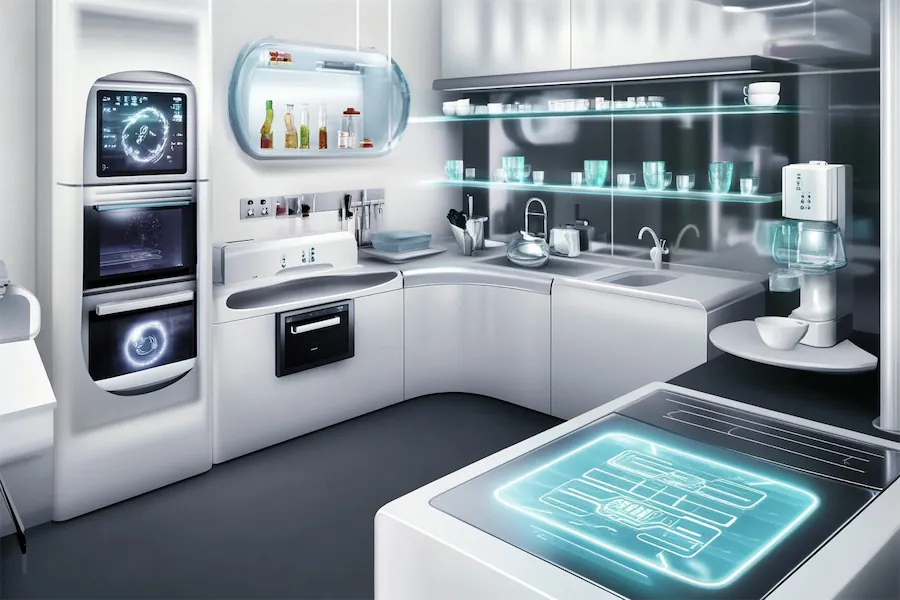A smart kitchen integrates advanced technology and innovative design to enhance efficiency, convenience, and sustainability in the heart of the home. By incorporating intelligent appliances, automated systems, and thoughtful layouts, homeowners can create a space that adapts to modern lifestyles.
Key Features of Smart Kitchens
- Intelligent Appliances: Modern smart kitchens feature appliances equipped with AI capabilities, such as refrigerators that monitor food inventory and suggest recipes based on available ingredients. For instance, Samsung’s Bespoke refrigerator can detect when items are running low and automatically order groceries via Instacart.
- Voice and App Control: Many smart appliances can be controlled via voice commands or smartphone applications, allowing users to adjust settings, monitor cooking progress, and receive notifications remotely. This integration enhances user convenience and streamlines kitchen operations.
- Automated Cooking Systems: Innovations like the Brisk It Zelos 450 smart grill utilize AI to automate cooking processes, adjusting temperatures and cooking times to ensure optimal results. Such systems simplify meal preparation and reduce the likelihood of errors.
- Energy Efficiency: Smart kitchens often incorporate energy-efficient appliances and systems that monitor and optimize energy usage, contributing to sustainability and reducing utility costs. Features like induction cooktops and steam ovens are becoming more prevalent, aligning with eco-friendly design trends.
- Integrated Design: The trend towards seamless integration of appliances into kitchen cabinetry creates a cohesive and uncluttered aesthetic. Built-in appliances and concealed storage solutions contribute to a sleek and modern kitchen environment.
Considerations When Designing a Smart Kitchen
- Compatibility: Ensure that smart appliances and systems are compatible with each other and with existing smart home ecosystems to facilitate seamless integration and control.
- User-Friendly Interfaces: Select appliances with intuitive interfaces to accommodate all users, regardless of their technological proficiency.
- Security and Privacy: Implement robust security measures to protect against potential vulnerabilities associated with connected devices, safeguarding personal data and privacy.
- Future-Proofing: Design the kitchen with flexibility in mind, allowing for easy upgrades as technology evolves to accommodate future innovations.
Conclusion
Embracing smart kitchen design transforms the culinary space into a hub of innovation and efficiency. By integrating intelligent appliances, energy-efficient systems, and cohesive design elements, homeowners can create a kitchen that not only meets contemporary demands but also enhances the overall cooking and dining experience.
